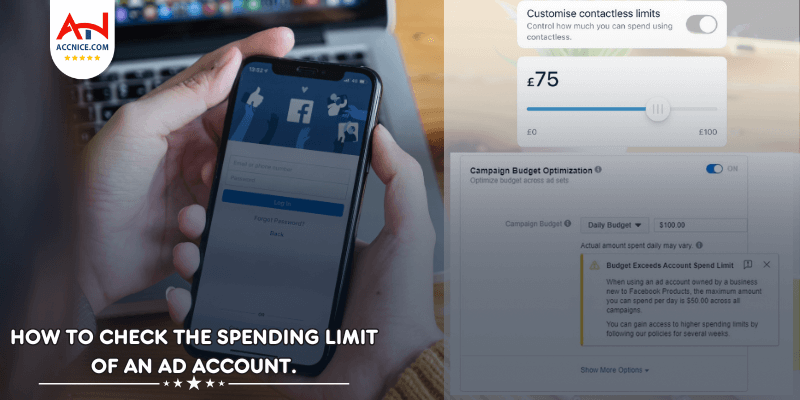Regularly Review Google Ads Performance
Author:
Ngày viết: 2024-08-03 11:19:49
In the competitive world of digital marketing, staying on top of your advertising game is important. One of the best ways to ensure your campaigns are effective is to regularly review your Google Ads performance. Explore with ACCNICE This method helps you understand what's working, identify areas areas that need improvement and optimization of ad spend for better results.
Why Regular Reviews are Important

Understanding Campaign Efficiency
Regular reviews are crucial for understanding the efficiency of your marketing campaigns. By conducting periodic assessments, you can gain insights into various performance metrics such as click-through rates (CTR), conversion rates, and cost-per-click (CPC). These metrics provide valuable information about how well your ads are performing.
For example, a high CTR indicates that your ad is compelling enough to prompt users to click on it. However, if the conversion rate is low despite a high CTR, it might suggest that while the ad attracts interest, it fails to persuade visitors to take the desired action. Regular reviews help identify such discrepancies, enabling you to make informed adjustments to improve overall campaign performance. Adjusting the ad copy, targeting, or landing page based on these insights can lead to more effective advertising and better return on investment (ROI).
Identifying Trends
Frequent performance reviews play a pivotal role in identifying trends over time. By consistently monitoring your campaigns, you can detect patterns and shifts in consumer behavior. For instance, you might notice that certain products perform better during specific seasons or that there is an increase in engagement during holidays. Recognizing these trends allows you to tailor your advertising strategies to align with consumer preferences and behaviors.
Understanding trends also helps in forecasting future performance. By analyzing past data, you can make educated predictions about what to expect in upcoming campaigns. This foresight enables proactive planning, ensuring that your marketing efforts are always aligned with current market conditions. Moreover, staying ahead of trends can give you a competitive edge, as you can adapt quicker than competitors who might be slower to respond to market changes.
Enhancing Customer Understanding
Regular reviews provide deeper insights into your customer base. By analyzing data from your campaigns, you can gain a better understanding of your audience’s preferences, needs, and behaviors. This knowledge is invaluable for creating more targeted and personalized marketing strategies.
For instance, if reviews reveal that a particular demographic responds well to certain types of messages or products, you can focus your efforts on catering to that group. This not only improves the effectiveness of your campaigns but also enhances customer satisfaction and loyalty. Understanding your customers on a deeper level enables you to build stronger relationships, ultimately driving long-term business success.
Improving Budget Allocation
Another critical aspect of regular reviews is the optimization of your marketing budget. By continuously evaluating the performance of your campaigns, you can identify which strategies are yielding the best results and which are underperforming. This allows for more effective allocation of resources, ensuring that your budget is spent on high-performing campaigns while minimizing waste on ineffective ones.
For example, if a particular ad campaign is driving a high number of conversions at a low CPC, you might decide to allocate more budget to that campaign. Conversely, if another campaign has a high CPC with low conversions, it might be wise to either optimize it or reallocate its budget to more successful initiatives. Regular reviews ensure that your marketing spend is always optimized for maximum ROI.
Facilitating Continuous Improvement
Finally, regular reviews foster a culture of continuous improvement within your organization. By routinely analyzing and reflecting on campaign performance, you can identify areas for improvement and implement changes promptly. This iterative process ensures that your marketing strategies are always evolving and improving, leading to sustained success over time.
In conclusion, regular reviews are an essential component of any successful marketing strategy. They provide critical insights into campaign efficiency, help identify trends, enhance customer understanding, improve budget allocation, and facilitate continuous improvement. By making regular reviews a standard practice, you can ensure that your marketing efforts are always optimized for success.
How to Conduct a Performance Review

Set Clear Objectives
Before diving into the data, it is crucial to establish clear objectives for your performance review. Clear objectives provide direction and focus, ensuring that your review process is aligned with your business goals. Here are some steps to help you set effective objectives:
- Identify Your Goals: Determine what you aim to achieve with your campaigns. Common objectives include increasing conversions, reducing costs, improving engagement, or boosting brand awareness.
- Be Specific: Ensure that your goals are specific and measurable. Instead of aiming to "increase conversions," set a target such as "increase conversions by 20% over the next quarter."
- Prioritize Objectives: If you have multiple goals, prioritize them based on their importance to your overall business strategy.
- Align with Business Strategy: Ensure that your objectives align with your broader business strategy and marketing plan. This alignment will help you stay focused on what truly matters to your business.
Analyze Key Metrics
Once you have clear objectives, focus on key performance indicators (KPIs) that align with those objectives. Here are some important metrics to consider and how they relate to different goals:
- Impressions: The number of times your ad is shown. This metric is crucial for brand awareness campaigns.
- Clicks: The number of times users click on your ad. Clicks are essential for measuring the interest and engagement generated by your ad.
- Click-Through Rate (CTR): The ratio of clicks to impressions. A higher CTR indicates that your ad is relevant and compelling to your audience.
- Conversions: The number of desired actions taken by users, such as making a purchase or signing up for a newsletter. Conversions are vital for evaluating the effectiveness of your ad in driving specific actions.
- Cost-Per-Click (CPC): The average cost you pay for each click. CPC is important for managing your budget and assessing the cost-efficiency of your campaign.
- Conversion Rate: The ratio of conversions to clicks. This metric helps you understand how effectively your ad converts interested users into customers.
- Return on Ad Spend (ROAS): The revenue generated for every dollar spent on advertising. ROAS is critical for evaluating the overall profitability of your campaigns.
Compare Against Benchmarks
Comparing your current performance against industry benchmarks and historical data is essential for gaining context and setting realistic expectations. Here are steps to effectively use benchmarks:
- Gather Industry Benchmarks: Research industry benchmarks for your specific sector and type of campaign. This information can often be found in industry reports, case studies, and publications.
- Analyze Historical Data: Review your past campaign performance to establish internal benchmarks. This historical data provides a baseline for measuring progress over time.
- Identify Gaps and Opportunities: Compare your current metrics with industry and historical benchmarks. Identify areas where you are performing well and areas that need improvement.
- Set Realistic Goals: Use the benchmarks to set realistic and achievable goals. For example, if your CTR is below the industry average, aim to gradually improve it rather than expecting an immediate jump.
Conduct a Detailed Analysis
To conduct a comprehensive performance review, follow these steps:
- Data Collection: Gather all relevant data from your ad platforms, website analytics, and any other sources you use to track performance.
- Segmentation: Segment your data by different variables such as ad type, audience demographics, device, and location. This segmentation helps you understand performance variations across different segments.
- Trend Analysis: Look for trends over time to identify patterns in user behavior and campaign performance. This analysis can reveal seasonal trends, peaks, and troughs.
- Qualitative Insights: In addition to quantitative data, gather qualitative insights through customer feedback, surveys, and social media listening. These insights provide context and help explain the numbers.
- Identify Key Findings: Summarize the key findings from your analysis. Highlight both successes and areas needing improvement. Be sure to relate these findings back to your original objectives.
Implement Actionable Recommendations
After identifying key findings, develop actionable recommendations to improve your campaign performance. Here are steps to create and implement effective recommendations:
- Prioritize Actions: Based on your analysis, prioritize actions that will have the most significant impact on achieving your objectives.
- Create an Action Plan: Develop a detailed action plan outlining the steps you need to take, the resources required, and the timeline for implementation.
- Assign Responsibilities: Ensure that each action item is assigned to a specific team member or department. Clear accountability is crucial for effective implementation.
- Monitor Progress: Regularly monitor the progress of your action plan and make adjustments as needed. Continuous monitoring ensures that you stay on track and can address any issues promptly.
- Review and Iterate: Conduct regular follow-up reviews to assess the impact of your changes. Use these reviews to iterate and refine your strategies continuously.
In conclusion, conducting a performance review involves setting clear objectives, analyzing key metrics, comparing against benchmarks, conducting a detailed analysis, and implementing actionable recommendations. By following these steps, you can gain valuable insights into your campaign performance and make informed decisions to drive continuous improvement.
Tips for Optimizing Google Ads Performance

Refine Your Keywords
One of the most crucial aspects of optimizing your Google Ads performance is to regularly refine your keyword list. Keywords are the foundation of your ad campaigns, and their relevance directly impacts your ad's visibility and effectiveness. Here’s how to refine your keywords:
- Perform Keyword Research: Use tools like Google Keyword Planner to discover new high-performing keywords. Look for terms that have high search volume and low competition.
- Update Your Keyword List: Regularly update your keyword list by adding new high-performing terms and removing underperforming or irrelevant ones. This helps ensure that your ads reach the most relevant audience.
- Use Negative Keywords: Implement negative keywords to filter out unwanted traffic. Negative keywords prevent your ads from showing up for irrelevant search queries, which can save you money and improve your ad’s click-through rate (CTR).
- Analyze Search Terms Report: Regularly review the search terms report to see what terms users are actually searching for when they see your ads. Use this information to add new relevant keywords and negative keywords.
Enhance Ad Copy
Your ad copy is what captures the attention of potential customers and persuades them to click on your ad. Enhancing your ad copy involves continuous testing and optimization:
- A/B Testing: Conduct A/B tests by creating multiple versions of your ad copy. Test different headlines, descriptions, and calls-to-action (CTAs) to see which combinations perform best.
- Highlight Unique Selling Points (USPs): Clearly highlight what makes your product or service unique. This could be special offers, discounts, quality, speed of service, or any other USP.
- Include Strong CTAs: Use compelling CTAs that prompt users to take action. Phrases like “Buy Now,” “Sign Up Today,” or “Get a Free Quote” can increase your conversion rates.
- Leverage Ad Customizers: Use ad customizers to create dynamic ads that are more relevant to users. Customizers can adjust your ad copy based on factors like user location, device, or time of day.
Adjust Bidding Strategies
Effective bidding strategies are essential for maximizing your return on investment (ROI). By adjusting your bids based on performance data, you can optimize your ad spend:
- Monitor Performance Data: Regularly review your campaign performance data to identify high and low-performing keywords.
- Increase Bids for High-Performing Keywords: Allocate more budget to high-performing keywords that drive conversions and have a good ROI.
- Decrease Bids for Underperforming Keywords: Lower your bids or pause keywords that are not performing well to allocate your budget more effectively.
- Use Bid Adjustments: Implement bid adjustments for different devices, locations, and times of day based on performance. For example, if mobile users are more likely to convert, increase your bids for mobile traffic.
Utilize Ad Extensions
Ad extensions enhance your ads by providing additional information and increasing their visibility. They can improve your ad’s CTR and overall performance:
- Sitelink Extensions: Add sitelink extensions to direct users to specific pages on your website, such as product pages or contact forms. This makes it easier for users to find what they’re looking for.
- Callout Extensions: Use callout extensions to highlight special features, benefits, or offers. These snippets of text can make your ad stand out.
- Structured Snippets: Include structured snippets to provide more details about your products or services. For example, you can list specific types of products or service categories.
- Call Extensions: If phone calls are important for your business, use call extensions to allow users to call you directly from the ad.
- Location Extensions: If you have physical locations, add location extensions to help users find your nearest store or office.
Conclusion
Regularly reviewing and optimizing your Google Ads performance is essential for maintaining an effective digital marketing strategy. By refining your keywords, enhancing your ad copy, adjusting your bidding strategies, and utilizing ad extensions, you can achieve better results and maximize your advertising budget. Performance reviews should be a routine part of your marketing efforts to stay ahead of the competition and continually improve your campaigns. By understanding your campaign’s efficiency, identifying trends, and making data-driven optimizations, you can drive more conversions and achieve your marketing goals.
Thank You For Following Accnice.com
Buy Facebook, TikTok, Twitter, Instagram, Google advertising accounts and Genuine License Keys at the best prices at Accnice.com
























